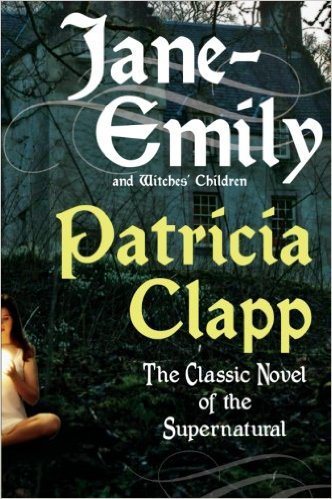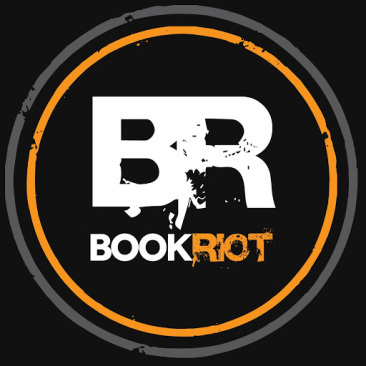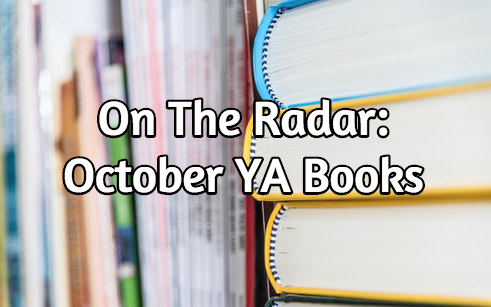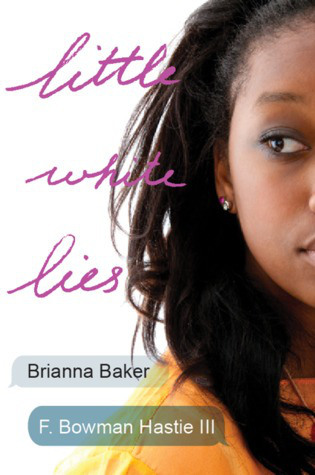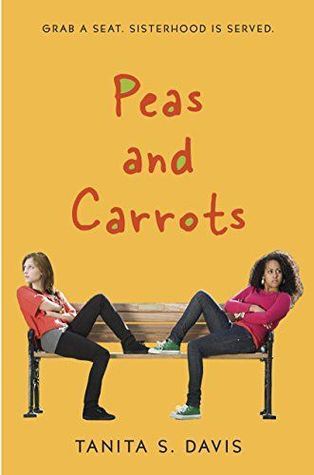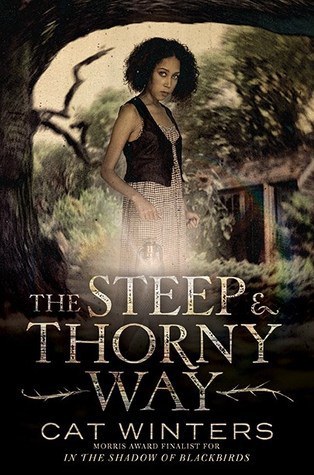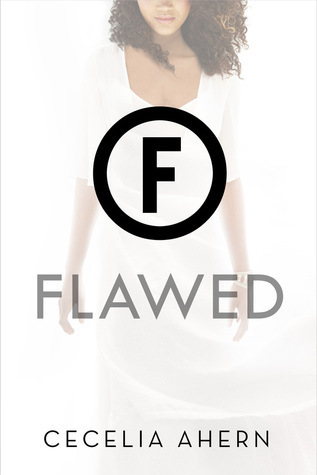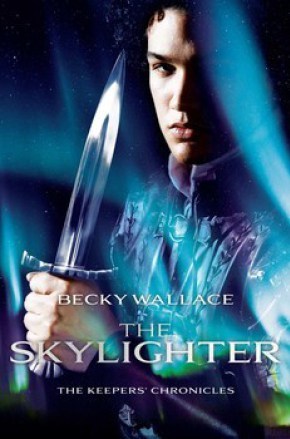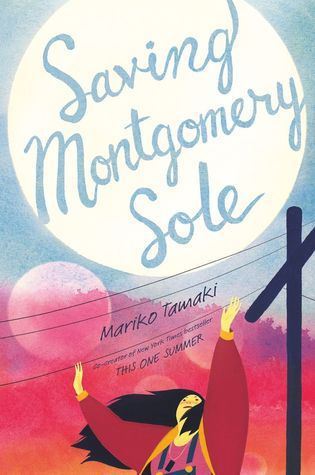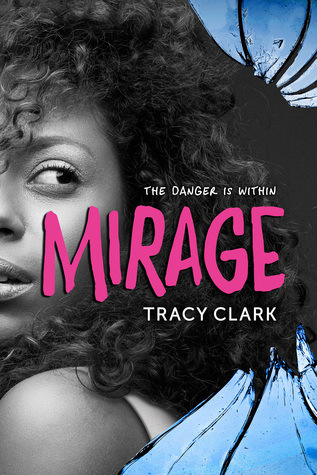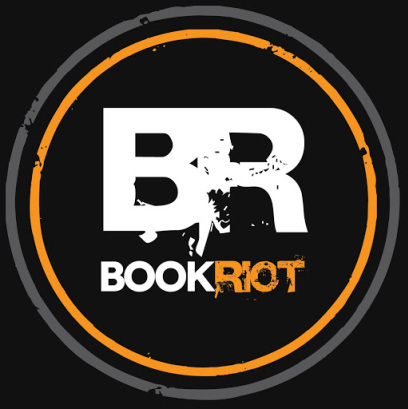Kelly Jensen's Blog, page 77
October 5, 2015
Cutaway Covers
I touched on this sort of cover design a few years ago, and I always enjoy seeing it pop up again. Often, the finished hardback book will have portions of the dust jacket actually cut away, revealing the characters or the action or a cityscape or some other hint at the plot underneath. It adds a lot of interest to the cover, often making two distinct covers for the reader to discover (one on the dust jacket, the other on the hardback underneath). Textured covers always helped sell books to me when I was a teen – and let’s be honest, they help sell books to me as an adult, too. What do you think of this design choice? I don’t think it’s used enough to be overdone yet, but I have seen it more frequently within the past year or so; almost all of the titles below have 2014 or later publication dates.
The Wrath and the Dawn by Renee Ahdieh (2015)
In this reimagining of The Arabian Nights, Shahrzad plans to avenge the death of her dearest friend by volunteering to marry the murderous boy-king of Khorasan but discovers not all is as it seems within the palace. [description via WorldCat]
The Rose and the Dagger by Renee Ahdieh (2016)
In a land on the brink of war, Shahrzad has been torn from the love of her husband Khalid, the Caliph of Khorasan. She once believed him a monster, but his secrets revealed a man tormented by guilt and a powerful curse—one that might keep them apart forever. Reunited with her family, who have taken refuge with enemies of Khalid, and Tariq, her childhood sweetheart, she should be happy. But Tariq now commands forces set on destroying Khalid’s empire. Shahrzad is almost a prisoner caught between loyalties to people she loves. But she refuses to be a pawn and devises a plan. [description via Goodreads]
Some of the Parts by Hannah Barnaby (2016)
A devastated teenaged girl sets out on a quest to track down transplant recipients after she discovers that her older brother was an organ donor. [description via WorldCat]
Killer Instinct by S. E. Green (2014)
When seventeen-year-old Lane becomes involved in the search for a serial killer active in the Washington, D.C. area, she worries that her life-long fascination with such murderers has a very real and terrible cause.
Now That You’re Here by Amy K. Nichols (2014)
When street smart graffiti artist Danny is jolted into a parallel world, only Eevee, an alluring science geek, has the know-how to get him home, but as he falls for her, his motives grow foggy. [description via WorldCat]
While You Were Gone by Amy K. Nichols (2015)
Eevee, an aspiring artist and daughter of Arizona’s governor, and Danny, a reformed troublemaker who lives in foster care in his own world, join forces to correct a breach between parallel universes. [description via WorldCat]
The Book of Ivy by Amy Engel (2014)
In an apocalyptic future where girls from the losing faction are forcibly married to boys of the winning faction, sixteen-year-old Ivy is tasked to kill her fiancé Bishop, although when she finally meets him, he is not the monster she has been led to believe. [description via WorldCat]
The Revolution of Ivy by Amy Engel (2015)
Ivy Westfall is beyond the fence and she is alone. Abandoned by her family and separated from Bishop Lattimer, Ivy must find a way to survive on her own in a land filled with countless dangers, both human and natural. She has traded a more civilized type of cruelty-forced marriages and murder plots-for the bare-knuckled brutality required to survive outside Westfall’s borders. But there is hope beyond the fence, as well. And when Bishop reappears in Ivy’s life, she must decide if returning to Westfall to take a final stand for what she believes is right is worth losing everything she’s fought for. [description via WorldCat]
The 100 by Kass Morgan (2013)
When 100 juvenile delinquents are sent on a mission to recolonize Earth, they get a second chance at freedom, friendship, and love, as they fight to survive in a dangerous new world. [description via WorldCat]
Dead to Me by Mary McCoy (2015)
In 1948 Hollywood, a treacherous world of tough-talking private eyes, psychopathic movie stars, and troubled starlets, sixteen-year-old Alice tries to find a young runaway who is the sole witness to a beating that put her sister, Annie, in a coma. [description via WorldCat]
The Notorious Pagan Jones by Nina Berry (2015)
Pagan Jones went from America’s sweetheart to fallen angel in one fateful night in 1960: the night a car accident killed her whole family. Pagan was behind the wheel and driving drunk. Nine months later, she’s stuck in the Lighthouse Reformatory for Wayward Girls and tortured by her guilt–not to mention the sadistic Miss Edwards, who takes special delight in humiliating the once-great Pagan Jones. But all of that is about to change. Pagan’s old agent shows up with a mysterious studio executive, Devin Black, and an offer. [description via WorldCat]
There Will Be Lies by Nick Lake (2015)
Shelby Cooper, nearly eighteen, has been overprotected by her single mother all her life but after a car accident, Shelby’s life is transformed not only by the discovery of secrets about herself, but also by trips into “The Dreaming,” where she is sent on a heroic quest wrapped in Native American mythology. [description via WorldCat]







 Related StoriesDiversity in 2016 YA Book Covers So FarSkip This Book: Future Perfect by Jen LarsenCover Doubles: Backs of Girls Edition
Related StoriesDiversity in 2016 YA Book Covers So FarSkip This Book: Future Perfect by Jen LarsenCover Doubles: Backs of Girls Edition
October 4, 2015
Skip This Book: Future Perfect by Jen Larsen

via http://www.stylehasnosize.com/2013/ho...
Take a minute to look at the image above. It’ll be useful for how I’m about to talk about Future Perfect by Jen Larsen. My body falls somewhere right between the first two women — I’m about 5’3 and somewhere between a 14 or 16, depending on the way the moon is that particular day. You would be right to call me fat because I am, but I am also muscular and toned. Because bodies are awesome and allow you to be both of those things simultaneously.
What’s worth thinking about isn’t where you fit into the picture or where I do. What’s worth thinking about is how, when you look at these women’s bodies, they are all “average.” Some carry more fat, but not one of these women are particularly obese as we consider it socially. Medically, their BMIs may categorize them as obese or extremely obese, but anyone who knows anything understands that BMIs mean absolutely nothing about your health nor about the shape your body makes. My body is “extremely obese” according to BMI, despite the fact I am healthy, active, and have no medical concerns relating to diseases like diabetes, high blood pressure, or other “fat people” concerns.
Likewise, only one size separates the woman on the far left with the woman who is second from the right. But they have 8 inches of height difference and their body proportions are very different.
With me here? Now let’s talk about why you need to skip Jen Larsen’s disappointing and disingenuous take on the empowered fat girl story with her novel Future Perfect.
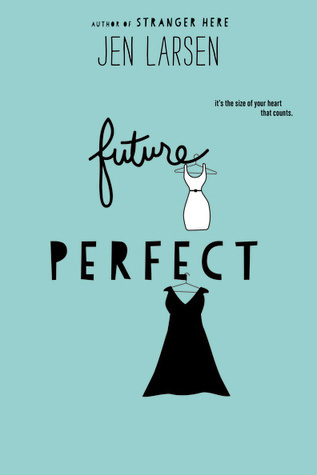
Ashley Perkins is a senior in high school. She lives in a small town in California, not too far from San Francisco, with her two brothers, her father, and her grandmother. She is, it seems, poor, but that’s never made quite clear enough in the story. And neither does telling the reader a town is a small town does a small town make.
Those two criticisms are the start of the flaws with Future Perfect. There’s not a clear delineation of how economics work in this town, nor is there any sort of world-building to suggest this is a small town, other than a few people in the town seem to be busybodies who “know a lot of things.” It’s interesting what those folks do and don’t know and what secrets can and do end up making a big splash through the story. Why, for example, does the principal of the school Ashley attends know about and encourage her to follow through with her grandmother’s offer (I’m getting there!) but no one in town seems to know the true story of her mother’s disappearance or history?
But like I said, I’m getting ahead of myself.
The entire premise of the book is this: Ashley’s controlling, apparently rich, grandmother has been offering her something every year on her birthday in exchange for her losing weight. A shopping trip for dropping x-number of pounds. A car on her sixteenth birthday if she lost x-amount of weight.
This year’s offer, though, is the thing making Ashley most nervous: what will her grandmother offer this year, knowing that this is the last year she could be living at home? That this year is one of the most important toward her future? Surely grandma’s going to make this one the big one. And she does.
Grandmother is willing to pay for four years of Harvard tuition for Ashley — Harvard being her dream school — in exchange for Ashley getting “weight loss surgery” so that her future is bright, she’s fit for it, and she finally meets socially approved body standards.
At this point, I’ve not yet mentioned Ashley’s size. Clearly, she must be huge if grandma is so fixated on her losing weight. Perhaps her weight has been keeping her back. Though, we can guess, if someone has a shot at getting into Harvard when she’s poor and from a small town, she’s probably not being held back achievement-wise.
Ashley is described as “tall.” She is described as part Latina — a fact that gets completely forgotten and overlooked through the book. And she’s described as “size 18, sometimes 20.”
Is she overweight? Maybe. Is she fat? Maybe.
We never know.
Larsen allows readers to draw conclusions about the size of her main character, but she offers up a numeric size to correspond to her. The problem being that, when Ashley is described as “tall,” we don’t know what that means. When she’s described as “size 18, sometimes 20,” we don’t know what that means, either. Ashley offers very little insight into her own relationship with her body until near the end of the book, but by then, it’s too little, too late. Ashley is confident, and she’s driven, but we don’t ever get to see this through the text. We’re told these things.
There is little to no internal life to this character, and she reads flat through and through. This is, of course, because her entire story is hinged upon her grandmother. Grandmother’s offer renders her as the evil, controlling force in Ashley’s life.
Let’s go back a second. The offer grandma offers Ashley is about “weight loss surgery.” I put that in quotes because that’s what the offer is. We’re never told what kind of weight loss surgery and the details of it, again shoved into the narrative far too late, are left to the reader to imagine. And let me tell you — there’s no need to actually imagine what this means because nearly immediately, readers know this entire set-up is for naught. We know Ashley’s going to walk out on the other side not having had the surgery and overcoming grandma’s insistence.
But more importantly, we know that because we know nothing about Ashley other than a vague description of her height and size and the fact she’s 17-years-old, no doctor in their right mind would consider giving Ashley “weight loss surgery.” (And this makes me wonder, since I cannot recall, if we ever learned how this surgery was going to be paid for — was grandma footing the entire bill, too?).
What could have made me buy this element of the story would be any work on the part of grandma or Ashley in any sort of pre-operative consultation. Things like dieting, meeting with a nutritionist, meeting with any type of medical processional or psych specialist, are completely not in this book. We don’t know anything at all about Ashley’s body composition, and we also don’t know at all what her eating or health habits might be, aside from the fact she’s active.
Anyone with any experience losing weight or, really, having a body, knows that there’s not a straight line from choosing to have “weight loss surgery” to having it done. There are steps to be taken, and you have to meet certain, specific criteria to qualify. Many of those criteria involve making efforts to lose weight on one’s own first — you have to prove that you’re willing to do this. Most medical professionals worth their mettle wouldn’t consider doing something like this on such a young patient, and that goes even more so when the patient is, for all intents and purposes, living a healthy life. Who is only slightly larger than the average American woman in the worse case scenario and perfectly appropriate size-wise in the best case.
The fact nothing is addressed in the interim, that there are no moments when Ashley meets with any sort of professional about her body and “weight loss surgery” is not only problematic, it’s exceptionally dangerous. This is not an okay message for a book to have, even if the outcome of the story is that Ashley chooses not to have the surgery.
I bold this because once grandma’s voice is in Ashley’s head about this, suddenly, everyone has an opinion and is an expert. This is not unrealistic. What IS unrealistic is that Ashley’s principal would tell her this was a good idea. That she would meet someone on the streets of San Francisco who calls her a “land cow.” That she would fact real, true vitriol day in and day out for being “size 18, sometimes 20.”
The fact there’s no discussion of what “weight loss surgery” means is damaging.
This goes back to the danger in no discussion about what happens in the time between choosing to do something about one’s weight surgically and having it happen immediately. There is no such thing as “weight loss surgery.” There are different types of medical procedures to remove fat from one’s body, and they are all different, they all have risks, and they are all exceptionally tough decisions for any individual to make. “Weight loss surgery,” defined that way for the bulk of the book, sends the false message that there is a surgery to remove fat from an individual’s body. There are procedures, but there are multiple procedures and they all have very different methods.
Aside from how disturbingly poor this entire thread of the book is — and it is the bulk of the book and what the entire story hinges upon — this is not the only problem with Future Perfect. It’s not well-written, and some of the situations that emerge outside of the big issue make little to no sense at all, and this is because there is no character development or realistic world-building. The inconsistencies in the story, as well as the telling-not-showing, hinder any sort of reader connection with these characters.
There’s a scene in the book that stood out as really disturbing to me on so many levels: Ashley, as well as her friends Laura and Jolene (who is a transgender girl), skip school one day to meet with Laura’s boyfriend who has an “art show” in San Francisco. We learn the show is in the Tenderloin, and the girls find themselves mingling with a lot of transients, as well as those who appear to have some real substance addiction problems. But rather than have any empathy for the people here, the girls choose to make light of it, and this is, unfortunately, one of the only parts of the books where the girls get to show the readers who they are outside of school/outside of the bounds of Ashley’s grandma’s offer. For characters who live in a “small town” where there are “poor people,” there was zero recognition that these individuals may be struggling.
I also found it bizarre one of those transient individuals would call tall, “size 18, sometimes 20” Ashley a “land cow.” This would be weird in any situation, but it’s weirder given her description and the fact this happens in one of the most liberal areas of one of the most liberal cities in America. It doesn’t make sense.
The scene only gets more outlandish when the girls fall asleep on the BART and are accosted and handled roughly by the police. It was completely unrealistic and ridiculous and made me uncomfortable given that we know these girls are (mostly) not white, upper middle class, straight, and cisgendered. There’s no commentary, no depth. It’s superficial and problematic.
One more thing worth pointing out as a big question mark to this book is in the character and story of Jolene. As mentioned, she’s transgender. We understand that causes some issues at home, but again, Larsen renders is very superficially throughout, until there’s a sudden need for Jolene to leave her home. She’s going to live with Ashley for the time being, and Jolene is welcomed and accepted warmly — including by Ashley’s grandmother. This is surprising not because Jolene is transgender and welcome in the home, but it’s surprising because it tells us a lot about how inconsistent and poorly developed Ashley’s grandmother is. She is merely the evil force in Ashley’s life and she’s absolutely nothing more. It’s convenient how frequently grandma is out of the house when Ashley needs time to think about anything.
Future Perfect tries to do a lot but it ultimately fails to do anything. It feels like a checklist: an “empowered” fat girl, a best friend who is transgender, a romance (I haven’t even touched on how superficial the romance here is — both the one that lasts and the one that buds later on), an evil family member, a deep family secret, a “small town” setting, a part-Latina main character. Not one of these things transcends beyond being a checkmark in a box, and indeed, it makes this book one problem after another, stuffed with underwhelming characters, scenes, and writing. It’s really surprising to me this book got through the editing and fact-checking stage at all.
Though I don’t think this reflects upon the story as told, it was impossible for me not to think about the fact this author wrote a memoir before this book about her own “weight loss surgery.” I don’t have anything to elaborate upon that except to say that it makes me wonder about how message comes out here, rather than story. And I can’t help wonder how much her own experience did or didn’t shade the way this shakes out.
I’m not going to spend words talking about how no other alternatives for paying Harvard tuition were offered, nor the fact that Harvard is free to attend for students coming from families earning under $65,000 a year (a very easily researched fact). We’d have to know anything more about Ashley than her grandma’s offer to understand anything about her financial situation, her real passion for attending the school (and to be fair, we get a LITTLE of this), or, like, any initiative to find a way to pay for education like other students do. There’s a clear lack of research or understanding of how the college admissions and financial aid system works.
Bypass this book. There are so many better ones out there, even in a field where there are virtually no good stories featuring fat main characters in YA. This book may cause damage to young readers — and I don’t say that lightly.
If anything, I hope this review sheds light into why talking about numbers does matter in YA. And I hope it’s clear that choosing sizes, over numbers, in choosing vague descriptions over solid ones, causes more problems than it solves. As someone who was Ashley’s size in high school and as someone who grew much larger in college — up to a size 24 or so — I cannot imagine this book offering me any comfort. It would have further screwed with my ideas of what normal was, of what acceptable was, and about how people view my body. Thinking about how today’s teens, already warped by social norms of body size (the push for “ending obesity” today is much different than when I was younger), would react to this book makes my heart heavy.
We can offer much better.
We can offer actual education.







 Related StoriesThe Detour by S. A. BodeenLong Weekend Reading Part 2: PrincelessLong weekend reading part 1: Lumberjanes
Related StoriesThe Detour by S. A. BodeenLong Weekend Reading Part 2: PrincelessLong weekend reading part 1: Lumberjanes
October 2, 2015
Join Us For A Read Along
A couple of years ago, Leila, Liz, and I ran a week long blog and read along for Robert Cormier’s The Chocolate War. We’ve talked about doing something like that again for many months — we may have even had more than one in-person talk about it at ALA in January.
All of us have been feeling really burned out on social media lately. While there’s value in social justice or talking about racism, sexism, and other really important issues, feeling the need to be constantly “on” can get draining and take away one of the reasons we all decided to be involved in social media in the first place: for fun.
We decided now was the perfect time to do another read and blog along.
Like last time, we wanted to pick an older title so that talking about it honestly, looking at its merits, and talking about its potential influence in the YA world could generate good dialog. Leila suggested a horror novel since it’s October, and Liz threw out an older novel.
We think it’s perfect.
Patricia Clapp’s Jane-Emily will be the read along title. We invite anyone who wants to participate to pick up a copy of the book this month and read it. You can participate as much or as little as you want to.
The only rules are there are no rules. We just want to talk about the book.
The three of us will blog about the book the last week of October, and I know we’d be happy to host any guest posts and do a big round-up of other blog posts that are written that week about the book. So feel free to let us know you want to do those things or share links with us, and we’ll share them. If you don’t want to blog, we invite you to hop into the comments, onto Tumblr, onto Twitter, or whatever forum you want, to talk about reading the book and what you thought about it.
Here’s the book’s description, and Liz notes that it is, indeed, a YA/teen-driven novel:
Emily was a selfish, willful, hateful child who died before her thirteenth birthday. But that was a long time ago.
Jane is nine years old and an orphan when she and her young Aunt Louisa come to spend the summer at Jane’s grandmother’s house, a large, mysterious mansion in Massachusetts. Then one day . . . Jane stares into a reflecting ball in the garden—and the face that looks back at her is not her own.
Many years earlier, a child of rage and malevolence lived in this place. And she never left. Now Emily has dark plans for little Jane—a blood-chilling purpose that Louisa, just a girl herself, must battle with all her heart, soul, and spirit . . . or she will lose her innocent, helpless niece forever.
This book originally published in 1971, but it is available now, as it was reprinted in 2007. Snag a copy online or pick one up from the library.
We hope you can join us, and if not, we have plans for a second read and blog along before the year is out, so keep your eyes peeled for that.







 Related StoriesOn The Radar: 12 Books for OctoberWhat I’m Reading Now: Retellings EditionGlass Fantasies
Related StoriesOn The Radar: 12 Books for OctoberWhat I’m Reading Now: Retellings EditionGlass Fantasies
October 1, 2015
This Week at Book Riot
Over on Book Riot this week…
I want to know: what do you think the YA canon would look like? What books would be included? I would love a nice, healthy discussion about this because I think it’s far more fascinating than a “best YA ever!” list.
My monthly round-up of all things news in YA, “What YA Talking About?” is up for the month of September.
Like scary reads? For “3 On A YA Theme,” I’m talking about the idea of Midwest Gothic and what books might fit that description.
Over on Fourth & Sycamore, the literary journal of the Greenville Public Library (how neat is it a public library has a literary journal?), I was interviewed about censorship and the recent donation drive for Some Girls Are.







 Related StoriesThis Week at Book Riot
Related StoriesThis Week at Book Riot
September 30, 2015
On The Radar: 12 Books for October
One of the most popular posts I do over at Book Riot is the round-up of upcoming YA fiction titles, and one of the most popular questions I seem to get on Twitter and in my inboxes is “what should I be looking out for in YA?” For a lot of readers, especially those who work with teens either in classrooms or in libraries, knowing what’s coming out ahead of time is valuable to get those books into readers’ hands before they even ask.Each month, I’ll call out between 8 and 12 books coming out that should be on your radar. These include books by high-demand, well-known authors, as well as some up-and-coming and debut authors. They’ll be across a variety of genres, including diverse titles and writers. Not all of the books will be ones that Kimberly or I have read, nor will all of them be titles that we’re going to read and review. Rather, these are books that readers will be looking for and that have popped up regularly on social media, in advertising, in book mail, and so forth. It’s part science and part arbitrary and a way to keep the answer to “what should I know about for this month?” quick, easy, and under $300 (doable for smaller library budgets especially).
For October, here are 12 titles to have on your radar. All descriptions are from WorldCat, and I’ve noted why it should be included.

Black Widow: Forever Red by Margaret Stohl: Natasha Romanov, called the Black Widow, agent of S.H.I.E.L.D, rescues a young girl from Ivan, the man who once trained her as an assassin–and eight years later she is called upon to protect the teenager Ava has become from a threat from the past–and possibly from S.H.I.E.L.D itself.
Why: A full-length novel about Black Widow is going to do well. A female comic hero getting a whole book dedicated to her story? Rare and awesome.
Carry On by Rainbow Rowell: Simon Snow is the worst Chosen One who’s ever been chosen.That’s what his roommate, Baz, says. And Baz might be evil and a vampire and a complete git, but he’s probably right.Half the time, Simon can’t even make his wand work, and the other half, he starts something on fire. His mentor’s avoiding him, his girlfriend broke up with him, and there’s a magic-eating monster running around, wearing Simon’s face. Baz would be having a field day with all this, if he were here — it’s their last year at the Watford School of Magicks, and Simon’s infuriating nemesis didn’t even bother to show up.
Why: Rainbow Rowell.
Ice Like Fire by Sara Raasch: When Cordellan debt forces the Winterians to dig their mines for payment, they unearth something powerful and possibly dangerous: Primoria’s lost chasm of magic. Theron sees this find as an opportunity — with this much magic, the world can finally stand against threats like Angra. But Meira fears the danger the chasm poses — the last time the world had access to so much magic, it spawned the Decay.
Why: This is the sequel to Snow Like Ashes, which did quite well. It’s a female-driven fantasy series with comparisons to Graceling.

An Inheritance of Ashes by Leah Bobet: The strange war down south—with its rumors of gods and monsters—is over. And while sixteen-year-old Hallie and her sister wait to see who will return from the distant battlefield, they struggle to maintain their family farm.
When Hallie hires a veteran to help them, the war comes home in ways no one could have imagined, and soon Hallie is taking dangerous risks—and keeping desperate secrets. But even as she slowly learns more about the war and the men who fought it, ugly truths about Hallie’s own family are emerging. And while monsters and armies are converging on the small farm, the greatest threat to her home may be Hallie herself.
Why: It’s a stand alone fantasy! I’m not usually a fantasy reader but this one sounds really neat.
MARTians by Blythe Woolston: ast girl Zoë Zindleman, numerical ID 009-99-9999, is starting work at AllMART, where “your smile is the AllMART welcome mat.” Her living arrangements are equally bleak: she can wait for her home to be foreclosed and stripped of anything valuable now that AnnaMom has moved away, leaving Zoë behind, or move to the Warren, an abandoned strip-mall-turned-refuge for other left-behinds. With a handful of other disaffected, forgotten kids, Zoë must find her place in a world that has consumed itself beyond redemption. She may be a last girl, but her name means “life,” and Zoë isn’t ready to disappear into the AllMART abyss. Zoë wants to live.
Why: Woolston always writes thought-provoking, challenging YA titles and this sounds like no exception.
Newt’s Emerald by Garth Nix: After the Newington Emerald is stolen at the height of a conjured storm, eighteen-year-old Lady Truthful Newington goes to London, disguised as a man, to search for the magical heirloom of her house, and is soon caught up in a dangerous adventure where she must risk her life, her reputation, and her heart.
Why: A new Garth Nix book is reason enough.

The Rest of Us Just Live Here by Patrick Ness: What if you aren’t the Chosen One? The one who’s supposed to fight the zombies, or the soul-eating ghosts, or whatever the heck this new thing is, with the blue lights and the death? What if you’re like Mikey? Who just wants to graduate and go to prom and maybe finally work up the courage to ask Henna out before someone goes and blows up the high school. Again. Because sometimes there are problems bigger than this week’s end of the world, and sometimes you just have to find the extraordinary in your ordinary life. Even if your best friend is worshipped by mountain lions.
Why: Patrick Ness writes about those characters who aren’t “the chosen ones.”
The Rose Society by Marie Lu: Known and feared as the White Wolf, Adelina Amouteru and her sister flee Kenettra to find other Young Elites in the hopes of building her own army of allies. But as Adelina’s powers (fed only by fear and hate) start to grow beyond her control, she also distrusts her newfound Elite friends. Teren Santoro, leader of the Inquisition, wants her dead. And her former friends, Raffaele and the Dagger Society, want to stop her thirst for vengeance. Adelina struggles to cling to the good within her. But how can someone be good, when her very existence depends on darkness?
Why: The sequel to Marie Lu’s bestselling Young Elites. It’s going to be popular.
These Shallow Graves by Jennifer Donnelly: A young woman in nineteenth-century New York City must struggle against gender and class boundaries when her father is found dead of a supposed suicide, and she believes there is more than meets the eye, so in order to uncover the truth she will have to decide how much she is willing to risk and lose.
Why: Sounds like a solid historical mystery, and that it’s written by Jennifer Donnelly only adds to the appeal.

A Thousand Nights by EK Johnston: Lo-Melkhiin killed three hundred girls before he came to her village, so when she is taken to the king’s dangerous court she believes death will soon follow, but night after night Lo-Melkhiin comes to her and listens to the stories she tells, leading her to unlocking years of fear that have tormented and silenced the kingdom, and soon she is dreaming of bigger, more terrible magic, power enough to save a king, if she can put an end to rule of a monster.
Why: Johnston is definitely an emerging talent in the YA world, and retellings are always popular. Kimberly reviewed this one positively, too.
Wolf by Wolf by Ryan Graudin: The first book in a duology about an alternate version of 1956 where the Axis powers won WWII, and hold an annual motorcycle race across their conjoined continents to commemorate their victory.
Why: Graudin is doing some risky fiction with Little Brown and this is no exception. Her last book with them, The Walled City, didn’t get the attention that it should have. This particular title had a nice promotional mailing with it, so it’s going to be bigger. First in a new duology.
The Death and Life of Zebulon Finch by Daniel Kraus: The story follows Zebulon Finch, a teenager murdered in 1896 Chicago who inexplicably returns from the dead and searches for redemption through the ages.
Why: Kraus never disappoints with his work, and this is a massive, challenging tome that readers looking for a long, thought-provoking read, will be eager to dig into.







 Related StoriesGlass FantasiesArabian NightsOn The Radar: 14 September YA Reads
Related StoriesGlass FantasiesArabian NightsOn The Radar: 14 September YA Reads
September 29, 2015
What I’m Reading Now: Retellings Edition
The Wrath and the Dawn by Renee Ahdieh
I started reading this one before I dove into A Thousand Nights by E. K. Johnston (there’s still time to enter to win a prize pack at that link, by the way), and they’re interesting read in conjunction with each other. They’re actually quite different in tone – Johnston goes for the ethereal and Ahdieh’s story feels much more grounded. The explanations behind the monstrous rulers’ terrible actions – killing each wife before the sun rises – are different as well, with Johnston’s rooted much more in myth and Ahdieh’s focused on a curse. The Wrath and the Dawn also features a romance, though how it plays out I am not yet far enough in to determine. I like it so far and think it stands perfectly well on its own; neither it nor A Thousand Nights suffers in comparison with the other. I have to admit, though, that I’m a bit predisposed to like Ahdieh’s writing since we share an alma mater.
Mechanica by Betsy Cornwell
Cinderella seems to be the most-often retold fairy tale, and it’s certainly my favorite. Comparisons to Marissa Meyer’s Cinder are inevitable with this one, since both feature mechanically-inclined protagonists, but Cornwell actually sold her book before Meyer did and so far they’re quite different to me. Mechanica has more of a steampunk feel, and the scope is much smaller – no interplanetary conspiracies. Nicolette – called Mechanica by her stepsisters – is a gifted inventor and does so in secret in the basement, hoping to eventually sell her inventions and make enough money to escape her awful situation. I’ve just begun reading, but I’ve heard this is one of the most feminist retellings of Cinderella yet, so it was a given I’d read it sooner rather than later.
Ash and Bramble by Sarah Prineas
This is another Cinderella retelling, but it also incorporates many aspects of other fairy tales. Pin is locked in a fortress by a fairy Godmother, and she doesn’t know how she got there – or really who she is. She spends her time sewing dresses and eventually escapes with the assistance of a boy, whom we know only as Shoemaker, or Shoe (at least so far). I’ve always really enjoyed re-tellings that mix together different fairy tales or myths into a single storyline (like Fables for adults, or Elissa Sussman’s Stray), and the mythology behind this one – featuring a Story with a capital S controlled in some way by the Godmother – is unique. The issue with re-telling a perennial favorite like Cinderella, a story so old and steeped in western culture, is making it fresh for the reader. This is easier to do with teens, who haven’t been exposed to as much as adult readers, but even so, Prineas’ take feels original – for both teen readers and for oldsters like me. Prineas has written middle grade before; this is her first crack at young adult. The writing is complex and it seems like she’s setting up an equally complex world.







 Related StoriesGlass FantasiesDiversity in 2016 YA Book Covers So FarReview and Giveaway: A Thousand Nights by E. K. Johnston
Related StoriesGlass FantasiesDiversity in 2016 YA Book Covers So FarReview and Giveaway: A Thousand Nights by E. K. Johnston
September 28, 2015
Glass Fantasies
Fantasy seems to be having a bit of a love affair with glass lately. In browsing catalogs, I think I’ve seen at least one fantasy title with the word “glass” in it per publisher for the upcoming season. It’s not a hugely new thing for fantasy – I remember reading a fantasy series about a glassworkers’ guild when I was a teenager – but it’s frequent enough within the past couple of years that I’ve taken notice. Below is a brief list of fantasy novels (mostly YA, but one middle grade) published within the last five years (or forthcoming) whose titles all focus on glass in some way. What others have I missed? I’m sure there are more out there!
Descriptions are from Worldcat except for the forthcoming titles, whose descriptions are from Goodreads.
Glass Sword by Victoria Aveyard (February 2016)
The thrilling second book in the #1 New York Times bestselling Red Queen trilogy follows Mare Barrow on her mission to defeat the traitorous Maven.
Magic Under Glass by Jaclyn Dolamore
A wealthy sorcerer’s invitation to sing with his automaton leads seventeen-year-old Nimira, whose family’s disgrace brought her from a palace to poverty, into political intrigue, enchantments, and a friendship with a fairy prince who needs her help.
Princess of Glass by Jessica Day George
In the midst of maneuverings to create political alliances through marriage, sixteen-year-old Poppy, one of the infamous twelve dancing princesses, becomes the target of a vengeful witch while Prince Christian tries to save her.
The Glass Sentence by S. E. Grove
In 1891, in a world transformed by 1799’s Great Disruption–when all of the continents were flung into different time periods–thirteen-year-old Sophia Tims and her friend Theo go in search of Sophia’s uncle, Shadrack Elli, Boston’s foremost cartologer, who has been kidnapped.
The Glass Magician by Charlie N. Holmberg
Three months after returning Magician Emery Thane’s heart to his body, Ceony Twill is well on her way to becoming a Folder. Unfortunately, not all of Ceony’s thoughts have been focused on paper magic. Though she was promised romance by a fortuity box, Ceony still hasn’t broken the teacher-student barrier with Emery, despite their growing closeness. When a magician with a penchant for revenge believes that Ceony possesses a secret, he vows to discover it …even if it tears apart the very fabric of their magical world. After a series of attacks target Ceony and catch those she holds most dear in the crossfire, Ceony knows she must find the true limits of her powers …and keep her knowledge from falling into wayward hands.
Throne of Glass by Sarah J. Maas
After she has served a year of hard labor in the salt mines of Endovier for her crimes, Crown Prince Dorian offers eighteen-year-old assassin Celaena Sardothien her freedom on the condition that she act as his champion in a competition to find a new royal assassin.
Burning Glass by Kathryn Purdie (March 2016)
Sonya was born with the rare gift to feel what those around her feel—both physically and emotionally—a gift she’s kept hidden from the empire for seventeen long years. After a reckless mistake wipes out all the other girls with similar abilities, Sonya is hauled off to the palace and forced to serve the emperor as his sovereign Auraseer. Tasked with sensing the intentions of would-be assassins, Sonya is under constant pressure to protect the emperor. One mistake, one small failure, will cost her own life and the lives of the few people left in the world who still trust her.
Through the Zombie Glass by Gena Showalter
After a strange new zombie attack, a terrible darkness blooms inside Alice urging her to do wicked things. She’s never needed her team of zombie slayers more–including her boyfriend, Cole–than she does now. But as Cole strangely withdraws and the zombies gain new strength, Ali knows one false step may doom them all
The Glass Arrow by Kristen Simmons
Stolen from her home, and being groomed for auction, Aya is desperate to escape her fate and return to her family, but her only allies are a loyal wolf she’s raised from a pup and a strange mute boy who may be her best hope for freedom … if she can truly trust him.
Storm Glass, Sea Glass, and Spy Glass by Maria V. Snyder
As a glassmaker and a magician-in-training, Opal Cowen understands trial by fire. Now it’s time to test her mettle. Someone has sabotaged the Stormdancer clan’s glass orbs, killing their most powerful magicians.
The Glass Casket by McCormick Templeman
After the brutal murder of her cousin, everything changes for sixteen-year-old Rowan, who must not only seek the evil forces responsible before they destroy her family and village, but also set aside her studies when she becomes betrothed to her best friend, Tom.







 Related StoriesArabian NightsReview and Giveaway: A Thousand Nights by E. K. JohnstonDiversity in 2016 YA Book Covers So Far
Related StoriesArabian NightsReview and Giveaway: A Thousand Nights by E. K. JohnstonDiversity in 2016 YA Book Covers So Far
September 27, 2015
Diversity in 2016 YA Book Covers So Far
Last year, I did two posts that explored diverse YA book covers. I wanted to see those covers featuring people of color prominently and obviously. After paying attention for those posts, it’s a thing I’ve kept an eye on as more 2016 YA book covers have been revealed. I’ve collected the covers fitting “diverse” in that they feature people who aren’t white in a way that makes it obvious they are not white.
All of the 2016 YA book covers haven’t yet been revealed yet, and there’s always the possibility that some covers previously revealed will be redesigned. But so far, 2016 is looking to be like a real let down when it comes to racial diversity on YA covers.
There are six books that feature boats or ships on covers in 2016 so far.
There is not one single — not one single — interracial couple on a YA book cover for 2016.+
There are plenty of white couples though.
But what’s really frustrating about seeing this isn’t just that there are not interracial couples depicted on 2016 YA covers yet. It’s that I can only think of one single YA book featuring an interracial couple at all, and that’s Sarah McCarry’s About A Girl cover. Granted, there are not a lot of YA covers that feature couples, period, but when you see a sea of boats and white-with-white couples, this absence becomes obvious. There are interracial couples in YA books and more, there are interracial couples in real teen life. Why aren’t we seeing that on covers?*
I suspect it’s asking a lot or expecting a lot, since the field of people of color on YA book covers is, itself, a thing that merits attention because it’s novel. The growth of flat design and illustration-driven covers clearly plays a part in this, too — I’ve spoken pretty openly about my dislike of the illustration trend because I find it kind of boring and monotonous, and I think it’s also been a convenient way for diversity on covers to be ignored further. Getting away from people on covers isn’t bad, but when they then become merely shadowy figures, what does that say about a commitment to showcasing reality? It’s like slapping sunglasses on Asian models on covers so they appear more white than they are (and yes, this is a thing — would you know she’s supposed to be Korean if you didn’t know from the book’s description?).
Can we do better though? This is reality. And seeing nothing but white couples on covers is a lie to reality and it’s a lie to the richness in YA as it stands now. I would love to highlight at least one, if not two, YA books featuring interracial couples from traditional publishers in 2016. We don’t tend to do cover reveals here, but I would do one in a heartbeat for a book like that, especially if it’s by an author of color. To suggest these books “don’t sell” or “don’t do well” because of “the market” is bullshit. They don’t do well because they’re not even being put out there TO do well. And when they are put out there, they aren’t given marketing budgets. Or they’re books written by white people who get a person of color on the cover and thus, money and attention. This is what our readers are looking for — our readers are primarily gate keepers who serve diverse teens and they deserve to know about these books in this way.
Here’s a round-up of the YA covers from major publishers (as well as some of the smaller traditional ones!) featuring people of color on them as seen so far for 2016. Descriptions are from Goodreads. Let me know if I’ve missed any big ones in the comments, and please, I want to know: what YA covers featuring interracial couples can you think of? Are there any beyond the one that McCarry advocated for on her own?**
Little White Lies by Brianna Baker and F. Bowman Hastie III (Soho Teen, February 9)***
Seventeen-year-old honors student Coretta White’s Tumblr, Little White Lies–a witty commentary on race and current events, as well as an exposé of her brilliant-yet-clueless parents–has just gone viral. She’s got hundreds of thousands of followers; she’s even been offered a TV deal. But Coretta has a confession: she hasn’t been writing her
own posts. Overwhelmed with the stress of keeping up with her schoolwork and applying for colleges, she has secretly hired a forty-one-year-old ghostwriter named Karl Ristoff to help her with the Tumblr. His contributions have helped make it a sensation, but unable to bear the guilt, Coretta eventually confesses the scandalous truth to a select
few to free herself of the burden.
The fallout is almost instantaneous. Before she knows it, her reputation has been destroyed. The media deal disappears. Even her boyfriend breaks up with her. Then Karl is thrust into the limelight, only to suffer a precipitous fall himself. Ultimately, the two join forces to find out who is responsible for ruining both of their lives . . . someone who might even have had the power to fuel their success in the first place. And to exact justice and a clever revenge, they must truly come clean to each other.
Peas and Carrots by Tanita S. Davis (Knopf, February 9)***
In this new YA novel by Tanita S. Davis, the Coretta Scott King Honor author of Mare’s War, a white teen named Dess is placed into foster care with a black family while her mother is incarcerated.
The Steep and Thorny Way by Cat Winters (Amulet, March 8)
1920s Oregon is not a welcoming place for Hanalee Denney, the daughter of a white woman and an African-American man. She has almost no rights by law, and the Ku Klux Klan breeds fear and hatred in even Hanalee’s oldest friendships. Plus, her father, Hank Denney, died a year ago, hit by a drunk-driving teenager. Now her father’s killer is out of jail and back in town, and he claims that Hanalee’s father wasn’t killed by the accident at all but, instead, was poisoned by the doctor who looked after him—who happens to be Hanalee’s new stepfather.
The only way for Hanalee to get the answers she needs is to ask Hank himself, a “haint” wandering the roads at night.
Flawed by Cecelia Ahern (Feiwel and Friends, April 5)
Celestine North lives a perfect life. She’s a model daughter and sister, she’s well-liked by her classmates and teachers, and she’s dating the impossibly charming Art Crevan.
But then Celestine encounters a situation where she makes an instinctive decision. She breaks a rule. And now faces life-changing repercussions.
She could be imprisoned. She could be branded. She could be found FLAWED.
The Skylighter by Becky Wallace (Margaret K McElderry/S&S, March 22)
Johanna and Rafi are in a race against time to save their country before a power-mad Keeper destroys everything they hold dear in the “enthralling magical world” (Cinda Williams Chima, author of The Heir Chronicles) introduced in The Storyspinner.
As the last of the royal line, Johanna is the only person who can heal a magical breach in the wall that separates her kingdom of Santarem from the land of the Keepers, legendary men and women who wield elemental magic. The barrier protects Santarem from those Keepers who might try to take power over mere humans…Keepers who are determined to stop Johanna and seize the wall’s power for themselves.
And they’re not the only ones. As the duchys of Santarem descend into war over the throne, Johanna relies more than ever on the advice of her handsome companion, Lord Rafael DeSilva. But Rafi is a duke too, and his people come first. As their friendship progresses into the beginnings of a tender relationship, Johanna must wonder: is Rafi looking out for her happiness, or does he want the throne for himself?
With war on the horizon, Johanna and Rafi dodge treacherous dukes and Keeper assassins as they race to through the countryside, determined to strengthen the wall before it’s too late…even if it means sacrificing their happiness for the sake of their world.
Saving Montgomery Sole by Mariko Tamaki (Roaring Brook, April 19)***
Montgomery Sole is a square peg in a small town, forced to go to a school full of jocks and girls who don’t even know what irony is. It would all be impossible if it weren’t for her best friends, Thomas and Naoki. The three are also the only members of Jefferson High’s Mystery Club, dedicated to exploring the weird and unexplained, from ESP and astrology to super powers and mysterious objects.
Then there’s the Eye of Know, the possibly powerful crystal amulet Monty bought online. Will it help her predict the future or fight back against the ignorant jerks who make fun of Thomas for being gay or Monty for having two moms? Maybe the Eye is here just in time, because the newest resident of their small town is scarier than mothmen, poltergeists, or, you know, gym.
Mirage by Tracy Clark (HMH, July 5)
Seventeen-year-old Ryan Poitier Sharpe is a gutsy, outgoing girl who spends her summer days hurling herself out of planes at her parents’ skydiving center in the Mojave Desert. Fiercely independent and willing to take risks, she challenges those around her to live life fully. But after a brush with death, Ryan is severely altered—she’s not the same thrill-seeking girl she once was and seems to be teetering on the edge of psychosis. As her relationships crumble and her life unravels, Ryan must fight the girl she’s become—or lose herself forever—in this eerie and atmospheric thriller.
So it turns out there is a list on Goodreads of YA and Middle Grade titles with POC lead characters, too. Here’s the link — and while maybe if you squint you can tell some of the YA titles include a person of color on the cover. . . I’m still completely underwhelmed.
*I realized after writing this, there is a second YA book I can think of with an interracial couple on the cover. That would be the paperback iteration of Una LaMarche’s Like No Other. Because the hardcover is illustrated and the characters have their backs to the reader, it’s not possible to tell.
**Sarah McCarry is white and thus has some sway in what she wants to happen in a way that minority authors wouldn’t have. Were she a woman of color advocating for a cover like the one she was able to get, I’m not sure she would have been as fortunate.
***These books are also written by readily identifiable authors of color. So fewer than half. Come on.
+ Guess what I discovered after writing this post? Two YA books hitting shelves in 2016 with interracial couples on the cover. Check Them Out. I still stand by my words, though: we need more.







 Related StoriesHardcover to Paperback Makeovers: 6 YA Changes to ConsiderCover LookalikesCover Doubles: Backs of Girls Edition
Related StoriesHardcover to Paperback Makeovers: 6 YA Changes to ConsiderCover LookalikesCover Doubles: Backs of Girls Edition
September 24, 2015
This Week at Book Riot
Since I was out of town last week, I didn’t get a chance to include a link round-up from Book Riot. Here’s a look at what I’ve written over there recently:
3 On A YA Theme tackled 3 YA books featuring politics and 3 YA books you can see on-screen adaptations of streaming on Netflix right now.
Stock Reading, or, what sorts of ridiculous stock images I’ve come across when trying to find appropriate images for work-related bookish posts. I hope y’all help me caption that final image.
There are only a handful of subscriptions left for the third YA Quarterly Box I curate for Book Riot. Here’s a teaser for what’s to come in this next box…so if you want in, you should subscribe ASAP before it’s too late.
Angel Cruz, over at Women Write About Comics, interviewed me this week about Feminism For The Real World. Check it out!
Today’s my birthday, so in honor of that, here’s a picture of the best ice cream sandwich I’ve ever had to thank you all for being part of my everyday life (even if you don’t know it!). Is it mean to show you this? Either way, if you’re in Toronto or head there sometime, I cannot recommend Bang Bang Ice Cream enough. This beauty is burnt toffee ice cream smushed between two halves of a sugar cookie:







 Related StoriesThis Week at Book Riot
Related StoriesThis Week at Book Riot
September 23, 2015
Cover Doubles: Backs of Girls Edition
How about some cover doubles? Or, I should say, cover doubles with a side of a cover triple. Here are recent stock image reuses on book covers that have caught my eye. I’d love to know if you’ve seen any lately, whether they’re these doubles or others.
The first book to have the back of this girl as its central image was Nina LaCour’s 2014 Everything Leads To You. It’s a great, moody image and captures the feel of the book well. It’s romantic and has a sense of longing and possibility. It’s “light” looking without suggesting it’s a light read.
Ryan Revisited was self-published this summer, and it’s a stark look. We get to see more of her body, and it’s interesting the choice to crop her for the LaCour title, as well as the Fayman one. I think the full body works in this cover, as there’s not other images competing for attention. For a self-published title, it’s a pretty well-done cover.
In 2016, that same girl will be a central image for the cover of Corey Lynn Fayman’s Desert City Diva. That’s an interesting cover all around — a burned out, broke down car and a really unfortunate spider crawling along the title. I wouldn’t want to be that girl. I kind of think she looks out of place, as she looks too “pretty” to be walking among those less-than-pretty things. Interestingly, this book is also set in California, like LaCour’s.
Here’s another cover double that features the backside of a girl, but this time, she’s holding hands with her beau. This is a fascinating cover double to me because the books could not be more different. There’s Patterson’s Truth or Die, which is clearly a mystery/thriller genre read, and then there’s the paperback cover of Gayle Forman’s Just One Day which is a romantic YA read. The images are oddly effective on both covers though — there’s a target on the Patterson one to give it that thriller vibe, while the closer focus on the couple and their hand-holding on the Forman cover showcase the romance angle. Of course, the image is mirrored but otherwise, it’s exactly the same.







 Related StoriesHardcover to Paperback Makeovers: 6 YA Changes to ConsiderCover Lookalikes
Related StoriesHardcover to Paperback Makeovers: 6 YA Changes to ConsiderCover Lookalikes


